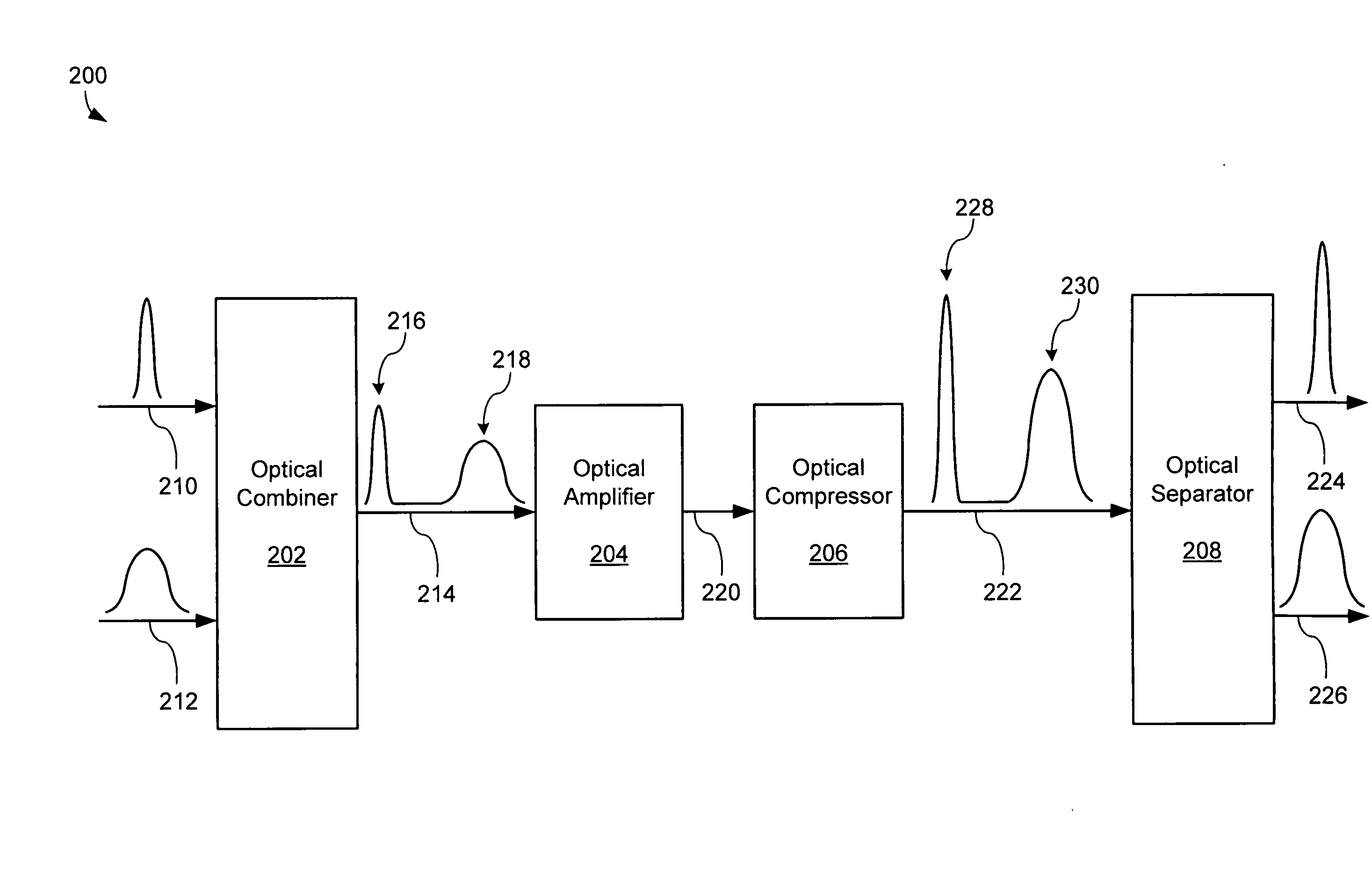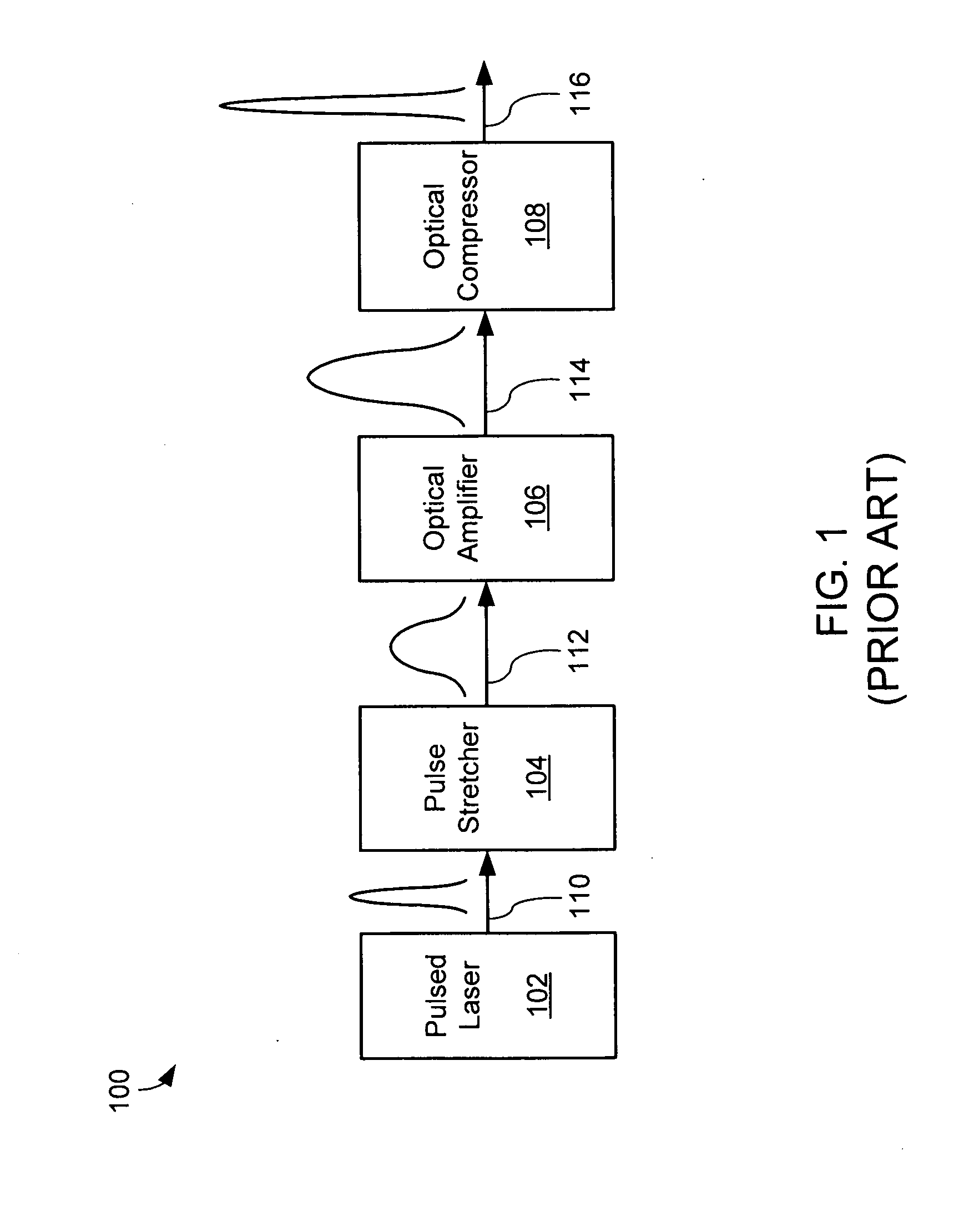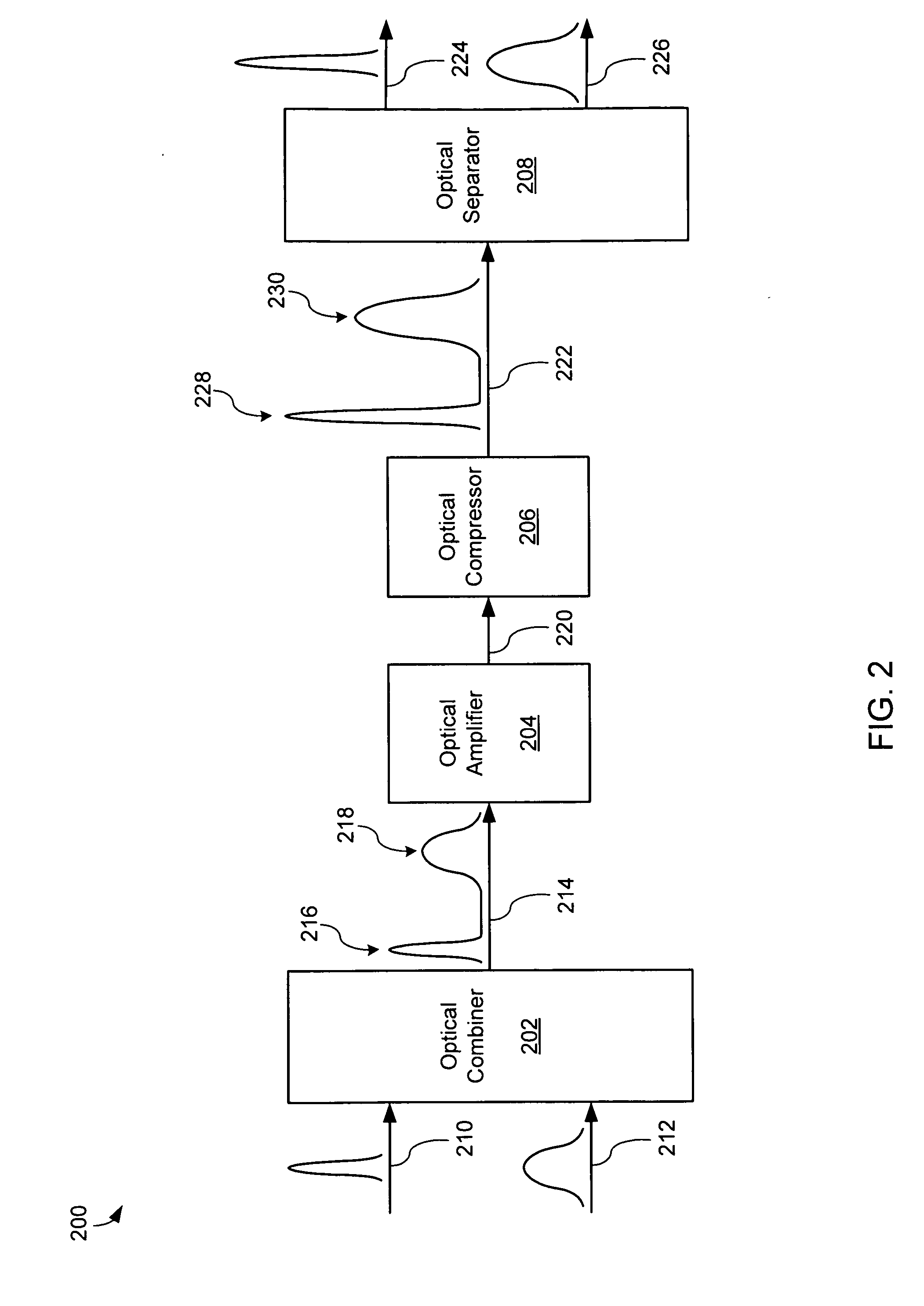Systems and methods for controlling a pulsed laser by combining laser signals
a pulsed laser and laser signal technology, applied in the field of lasers, can solve the problems of high power pulse picker efficiency, instability of the cpa system, and additional system complexity
- Summary
- Abstract
- Description
- Claims
- Application Information
AI Technical Summary
Benefits of technology
Problems solved by technology
Method used
Image
Examples
Embodiment Construction
[0025]FIG. 2 is a block diagram of an exemplary multiplexed CPA system 200. The multiplexed CPA system 200 comprises an optical combiner 202, an optical amplifier 204, an optical compressor 206, and an optical separator 208. The optical combiner 202 may be configured to combine a primary optical signal 210 and a secondary optical signal 212 into a combined optical signal 214. The optical combiner 202 may include an optical multiplexer, a star coupler, a polarization combiner, coupled optical fibers, optical lenses, or other components configured to spatially combine the primary optical signal 210 and the secondary optical signal 212 into the combined optical signal 214. The combined optical signal 214 may include both a primary optical signal representation 216 and a secondary optical signal representation 218, which may co-propagate within a single optical medium such as an optical waveguide, optical fiber, and / or free space. The combined optical signal 214 may be separable accordi...
PUM
 Login to View More
Login to View More Abstract
Description
Claims
Application Information
 Login to View More
Login to View More - R&D
- Intellectual Property
- Life Sciences
- Materials
- Tech Scout
- Unparalleled Data Quality
- Higher Quality Content
- 60% Fewer Hallucinations
Browse by: Latest US Patents, China's latest patents, Technical Efficacy Thesaurus, Application Domain, Technology Topic, Popular Technical Reports.
© 2025 PatSnap. All rights reserved.Legal|Privacy policy|Modern Slavery Act Transparency Statement|Sitemap|About US| Contact US: help@patsnap.com



